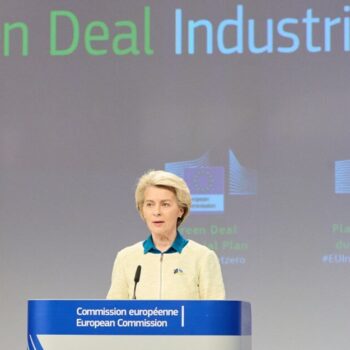Brexit will not stop Europe’s energy and climate transition, but it makes progress a more complicated business. The EU’s Energy Union is a project of integration: across borders, across sectors and linking both climate and energy concerns. Brexit, by contrast, seeks to de-couple the UK from the EU, and, inevitably, in the process, sever the ties that have already been achieved in this vitally important area. With the Brexit negotiations now underway, the EU needs a plan to ensure that energy transition continues to progress.
The first and biggest risk is distraction. Brexit is a black hole that drains away political attention and diplomatic resource. With Trump’s decision to withdraw from the Paris Agreement, the EU faces a big test of its climate leadership. The challenge is not only to keep the Paris Agreement alive, but to progressively increase climate commitments until they match up to the target of keeping global warming well below two degrees. Success will require serious diplomatic capacity.
Yet this is under threat: the UK makes up a sixth of all diplomatic staff in EU countries, and, until recently, had over 150 people in the foreign ministry working on climate change. By contrast, the European External Action Service has long been understaffed on climate diplomacy. Regardless of how messy or bitter the Brexit negotiations become, the EU and UK must nevertheless align and strengthen their diplomatic efforts on driving climate action internationally – or the goal of reducing climate change to two degrees will become unrealistic.
The second risk to the EU is that of a de-regulatory UK seeking to undercut EU markets by lowering climate, clean energy and environment standards. A set of UK rightwing newspapers and politicians (including Brexit advocate Michael Gove, recently and controversially appointed as Theresa May’s Environment Secretary) is campaigning for a ‘bonfire of EU red tape’. The regulations they object to are not red tape but green: renewable energy targets, product standards for toasters and hairdryers, and protections for birds and habitats. This deregulatory approach would not only distort trade between the UK and the EU-27, but also empower the blockers and laggards and make existing EU regulation harder to enforce.
This drive for deregulation is not shared across government, and so far the UK has kept its climate commitments in place. The European Council, for its part, has taken a firm line that ‘environmental dumping’ must be avoided. The priority now is to write commitments to high environmental and climate standards directly into the future UK-EU trade deal.
Third, the UK’s exit from the EU will inevitably require complex disentanglement of the UK from EU energy targets and policies. If the UK is no longer counted under the EU’s climate targets, other EU countries will have to increase their ambition to meet the overall target of at least 40% greenhouse gas reductions by 2030. A UK exit from the EU Emissions Trading Scheme would mean that the scheme needs to undergo yet another complex revision. The same applies to EU targets and rules on interconnection, renewables and efficiency. These changes should be taken as an opportunity to increase the pace of Europe’s energy transition, rather than slowing it down.
The fourth challenge that Brexit poses to the EU’s energy transition is disruption to energy markets and supply chains. 5% of all cross-border electricity flows in the EU go in to the UK. As a net energy importer, the UK will bear the brunt of any market disruption from a disorderly Brexit, but EU-27 companies are also exposed, including in low carbon sectors. The UK leads the EU in offshore wind deployment, for example but the majority of the suppliers and components that enable the wind farms to be built originate in the EU-27 rather than the UK. Energy businesses in both the UK and EU-27 want integrated markets to continue and a smooth transition. They fear the messy politics of Brexit will stand in the way.
Finally, averting a hiatus in clean energy investment is critical. Investors dislike political risk, and the cloud of uncertainty from Brexit may spread to EU-27 markets as well as the UK. Even before the UK referendum, EU clean energy investment was already far below its 2010 peak, and the European Investment Bank estimates an ‘investment gap’ of €100 billion per year for meeting 2030 energy and climate targets. Filling this investment gap is becoming even harder: Brexit will leave a €10 billion annual hole in the EU budget, and the European Investment Bank is losing a major shareholder. With proposals for the post-2020 EU budget now under development, the EU needs a clear story about how the public and private investment needed for the clean energy transition will be raised.


